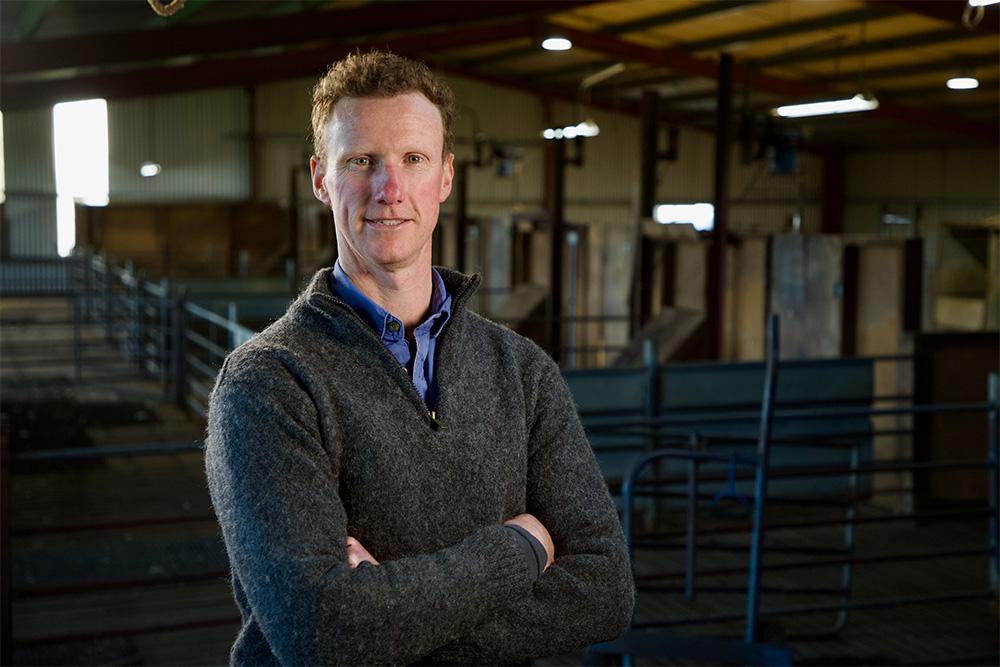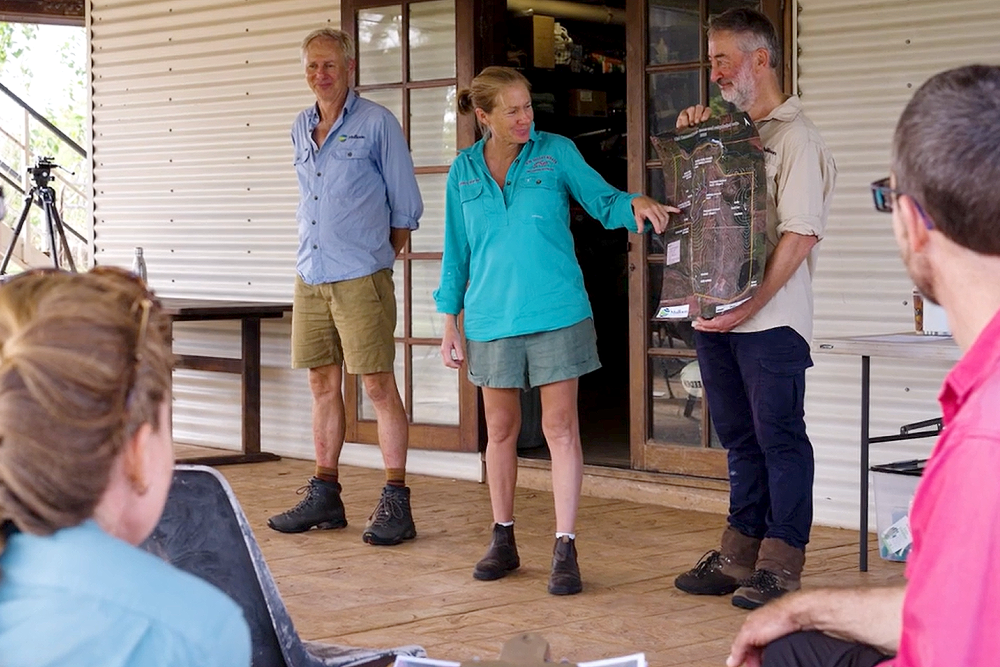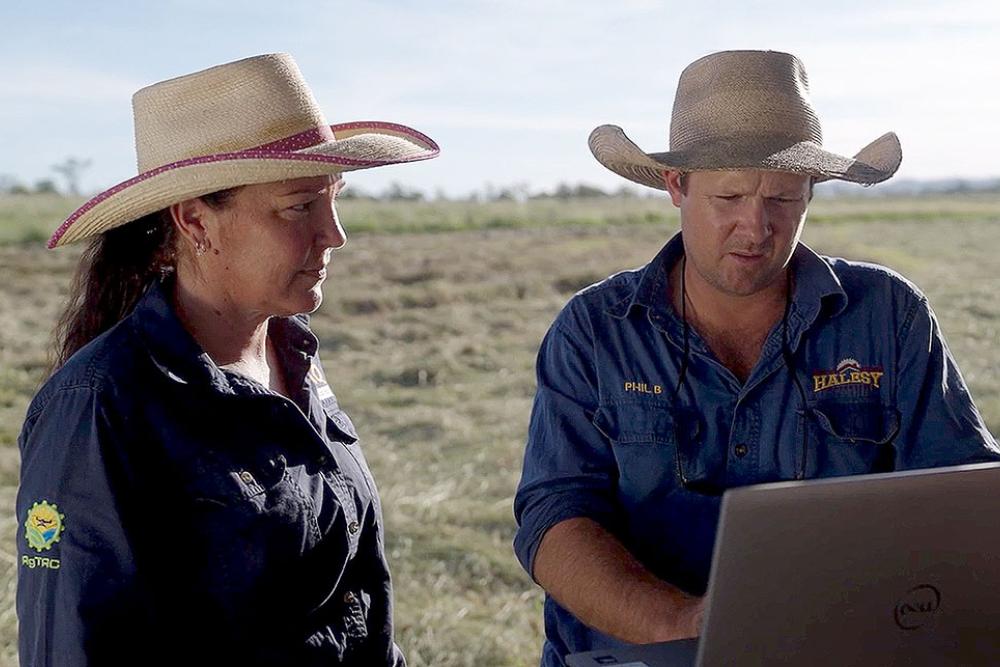For Maree and Ian Masterson, running a successful beef operation requires careful planning, particularly when it comes to managing dry conditions.
To refine their business strategies, the Mastersons have been making significant changes to their breeder and grazing land management approaches. They have sought expert advice from professionals through the Farm Business Resilience Program, accessing crucial support and guidance to strengthen their business against future droughts.
“It’s daunting to know where to start, what grants exist, and how to apply for them,” Maree explains. “But having people to help us—people we feel comfortable approaching—has made all the difference.”
Strategy and business planning are integral to the Mastersons’ success. Through Ian’s participation in the advancing Beef Leaders program—a professional development initiative for emerging beef leaders—he accessed valuable strategy and business planning support offered by the Farm Business Resilience Program. With the guidance from industry experts and resources from the Farm Business Resilience Program, Maree and Ian developed a comprehensive farm business resilience plan. They assessed key risks, set goals, and refined their vision for building drought resilience into their operation.
The farm business resilience support they received, along with funding from the Queensland Government’s Drought Preparedness Grant, will enhance their self-sufficiency. With grain and silage stored at Merrilands, they can now mix licks and transport feed up to Lochlea for their younger weaners and breeder herd during dry conditions.
“This will allow us to be more independent and in control. When dry conditions hit, we’ll have the resources we need rather than relying entirely on external suppliers,” says Maree.
One of the biggest challenges for the Mastersons was understanding what assistance was available and how to access it.
Through the support of the Future Drought Fund and the Farm Business Resilience Program, the Mastersons are now better equipped to manage their cattle operation through the challenges of drought, securing a more sustainable future for their business.
Find out how Farm Business Resilience planning is helping farming businesses just like the Mastersons thrive.
Video duration: 2mins 8 secs
Introduction
This is the transcript of a video case study produced by the Australian Government's Future Drought Fund and the Queensland Government's Drought and Climate Adaptation Program. The video is of Maree Masterson talking about the benefits of the Farm Business Resilience program.
Learn more about the Future Drought Fund and Farm Business Resilience program.
[Recording begins]
Video begins [0:00]
Music plays.
Maree Masterton [0:07]
I'm Maree Masterson and along with my husband Ian, we run Lochlea Station, where we run our breeders and weaners and then at about 18 months old, we truck them to our other block at Merrilands, down around Capella way.
So, currently we're looking to refine our business strategies, so we've been changing our breeder management and we are currently in the process of refining that.
We're also working with Lynette and Emma in regard to how to handle the dry parts of the seasons.
With Ian getting connections through ABL [Advancing Beef Leaders] and then Keerah introducing us to Lynette and then from Lynette to Emma, to put in place our application which having both of them involved made it a way easier process for us to go through… and they're fantastic to work with.
Keerah and Lynette came out to Lochlea and sat down and we worked through the booklet and went through a process of being asked questions of where we wanted to go, what we were looking to do, what we needed to do to achieve our vision of drought-proofing and then went away and put our responses into a more formal grant application with the help of Emma.
It will enable us to be more self-sufficient. That combined with the grain and the silage that we have down at Merrilands, it will enable us to mix licks to transport up here for our younger weaners and our breeder herd.
When the conditions are dry and we require it, it just allows us to be more independent and have control.
So, the biggest challenge is knowing what is out there and how to get. It is quite daunting for us to be able to know the right channels to go down, in the right way, to put the grants and stuff together.
So having people like Lynette, Emma and Keerah available for us to access and the right personalities that we feel comfortable enough to approach is very important.
Recording ends [2:08]
End screen displays the text Find support to prepare your Farm Business Resilience Plan and displays the website rfcsnq.com.au/fbrp. Also says the project is jointly funded by the Australian Government’s Future Drought Fund and the Queensland Government’s Drought and Climate Adaptation Program and the relevant government logos are also displayed.



